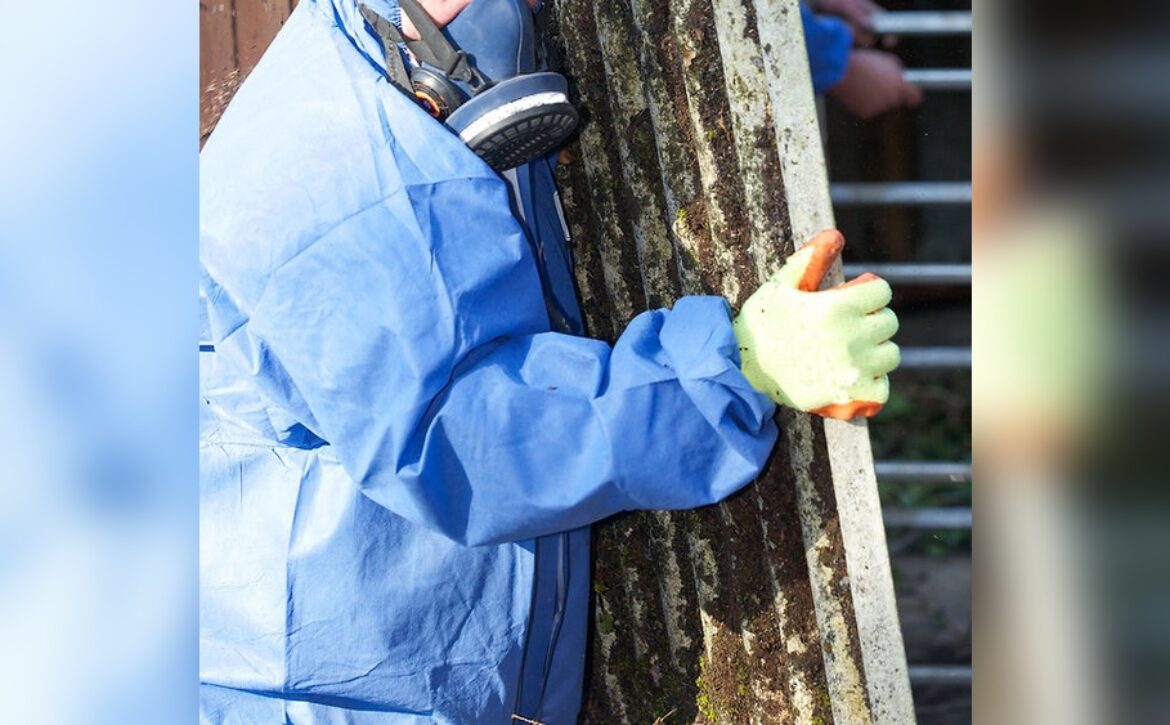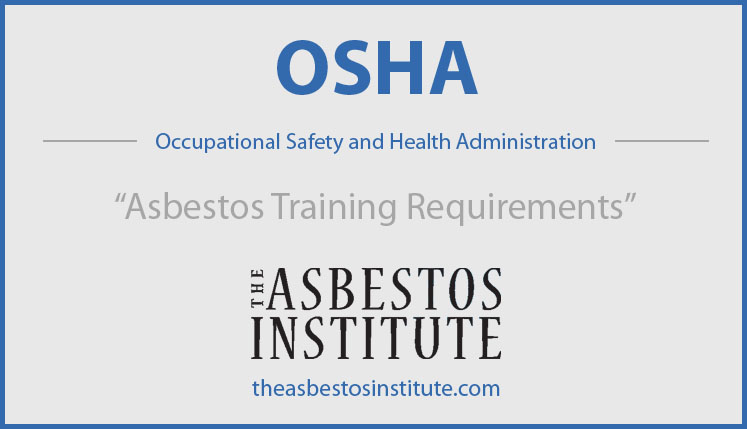
How to Become a Asbestos Awareness Training Expert
Are you looking to advance your career by gaining essential safety knowledge? Becoming adept in asbestos awareness training could be your next strategic move.
Asbestos, a hazardous material once commonly used in construction, poses serious health risks if not handled properly. By mastering asbestos awareness, you not only enhance your professional skill set but also contribute to a safer environment for everyone. Imagine the confidence you’ll feel when you can identify and manage asbestos risks effectively, ensuring the wellbeing of your colleagues and clients.
This guide will walk you through the steps to become an asbestos awareness training expert, empowering you to make informed decisions that protect lives. Ready to take control of your career and make a meaningful impact? Let’s dive in and discover how you can become an invaluable asset in the field of safety training.
Understanding Asbestos
Explore the path to asbestos awareness training to enhance safety knowledge. Essential for handling asbestos safely, this training covers recognition, risks, and precautionary measures. Equip yourself with vital skills to ensure a safer environment.
Understanding asbestos is crucial if you aim to become proficient in asbestos awareness training. Asbestos, once hailed as a miracle material, is now known for its severe health risks. Knowing its nature and hazards can empower you to educate others effectively. Let’s dive into what asbestos really is and why it poses such significant risks.
What Is Asbestos?
Asbestos refers to a group of naturally occurring minerals composed of thin, microscopic fibers. For decades, these fibers were used in construction materials due to their strength and heat resistance. Think of the insulation in older buildings or fireproofing materials that were once considered cutting-edge. If you’ve ever been in an old building and noticed crumbling ceiling tiles or frayed pipe insulation, you might have been near asbestos. When these materials are disturbed, they release tiny fibers into the air. This is when asbestos becomes dangerous.
Health Risks Associated With Asbestos
Breathing in asbestos fibers can lead to serious health problems. The most common diseases include asbestosis, lung cancer, and mesothelioma. These conditions often develop years after exposure, silently progressing until symptoms appear. You might wonder, how can something so small cause such damage? Once inhaled, asbestos fibers can become trapped in your lungs, causing inflammation and scarring. Over time, this can compromise lung function and even lead to cancer. Understanding these risks is not just about protecting yourself. It’s about safeguarding those around you, especially if you work in environments where asbestos exposure is possible. Would you ignore a ticking time bomb? Asbestos may not be visible, but its threat is real and significant.

Importance Of Asbestos Awareness
The importance of asbestos awareness cannot be overstated. Asbestos, once commonly used in construction, poses serious health risks when disturbed. Understanding these risks is crucial for anyone working in environments where asbestos may be present. Awareness training empowers you to recognize and handle asbestos safely, protecting yourself and others from potential harm.
Legal Requirements
Understanding legal requirements for asbestos training is essential. In many countries, legislation mandates that workers in construction or renovation receive asbestos awareness training. This ensures you meet legal standards and helps prevent costly fines or legal issues.
Beyond regulations, consider the ethical responsibility. Are you doing enough to protect your team? Compliance isn’t just about ticking boxes; it’s about safeguarding lives. Knowing the law helps you make informed decisions that align with both legal and moral obligations.
Safety Protocols
Safety protocols play a vital role in asbestos awareness. These guidelines teach you how to identify asbestos, minimizing exposure risk. Proper training includes wearing protective gear, using specialized equipment, and knowing how to safely contain asbestos.
Think back to a time you felt uncertain in a hazardous situation. Having a clear safety protocol could have made all the difference. Asbestos awareness training equips you with the knowledge to navigate such scenarios confidently, ensuring the safety of everyone involved.
Have you ever considered the implications of not knowing how to handle asbestos? The potential health risks are severe, making awareness not just a legal requirement but a critical component of workplace safety. Asbestos awareness training is your shield against these dangers, equipping you with the skills needed to protect yourself and your team.
Training And Certification
Understanding asbestos awareness training is crucial for anyone working in environments where asbestos exposure is possible. Training and certification are essential steps in ensuring that you are equipped with the necessary knowledge and skills to handle asbestos safely. This section will guide you through the types of training programs available and the certification process.
Types Of Training Programs
When it comes to asbestos awareness training, there are various programs available tailored to different needs. Some programs are designed for beginners, offering fundamental insights into asbestos safety. These programs typically cover the basics, including identifying asbestos-containing materials and understanding health risks.
Other programs focus on advanced techniques and procedures for handling asbestos. These might include practical sessions on using protective equipment and safely removing asbestos materials. Online courses are also available, providing flexibility for those who need to balance work and training.
Interactive workshops are another option, ideal for individuals who learn best through hands-on experience. These workshops often simulate real-world scenarios, allowing you to practice what you learn in a controlled environment.
Certification Process
Certification is a crucial step in becoming proficient in asbestos awareness. Once you complete your training program, you will typically need to pass an assessment to earn your certification. This assessment tests your knowledge and practical skills.
Certification not only validates your expertise but also boosts your credibility in the field. It can be a valuable asset when seeking employment or advancing your career. Employers often look for certified individuals, as it assures them of your competence in handling asbestos safely.
How can you ensure that you’re choosing the right certification? Look for programs accredited by recognized organizations. These certifications are more likely to be accepted by employers and regulatory bodies.
Are you ready to take the next step in your career with asbestos awareness training? Remember, the right training and certification can make a significant difference in your professional journey. Make informed choices and empower yourself with the knowledge and skills needed to ensure safety in your work environment.

Essential Skills For Trainers
Training others about asbestos awareness is a vital role. It’s not just about sharing facts; it’s about empowering people with knowledge that could save lives. To be effective, trainers need to master essential skills. These skills are the backbone of delivering a successful training program. Let’s dive into what these essential skills are and how you can develop them.
Communication Skills
Effective communication is the cornerstone of any good training session. You need to engage your audience and make complex information accessible. Think about how you explain things in everyday life. Use those same techniques here.
Interactive techniques, such as asking questions and encouraging discussions, can boost understanding. Visual aids can help make abstract concepts clearer. Consider how a simple diagram can explain the structure of asbestos fibers far better than words alone.
Imagine you’re explaining these concepts to someone who knows nothing about asbestos. Break down jargon into simple terms. This way, your trainees will walk away with a clear grasp of the subject.
Technical Knowledge
Understanding asbestos is crucial. You need to know its types, properties, and the risks associated with exposure. This knowledge is your tool for teaching effectively.
Stay updated with the latest research and regulations. Asbestos guidelines can change, and being informed will keep your training relevant. How can you expect to teach others if you aren’t current yourself?
Hands-on experience can greatly enhance your credibility. Share stories from the field. They make the training relatable and memorable. Have you ever encountered asbestos in a real-life situation? Sharing that can make the difference between a forgettable session and one that resonates.
Being a trainer is about more than just imparting knowledge. It’s about connecting with your audience and guiding them to understand and appreciate the importance of asbestos awareness. With the right skills, you can make a real impact. Ready to develop these skills and become a top-notch trainer?
Developing Training Material
Crafting effective asbestos awareness training material involves clear explanations and practical examples. Highlighting health risks and safe handling techniques is crucial. Engaging visuals and step-by-step instructions aid comprehension.
Creating asbestos awareness training material is crucial for ensuring the safety of workers who may come into contact with asbestos. Effective training not only educates but also empowers individuals to handle situations involving asbestos safely. Let’s dive into some practical strategies for developing impactful training material.
Creating Engaging Content
Start by asking yourself, “How can I make this topic interesting?” The key lies in making the information relatable. Share real-life scenarios where asbestos awareness made a difference. Use simple language that everyone can understand. Avoid jargon that might confuse participants. It’s about making the content accessible and memorable. Incorporate quizzes and interactive sessions. Encourage questions to keep the audience engaged. This interaction will solidify their understanding.
Utilizing Multimedia Resources
Think about how people learn best. Visual aids like videos and diagrams can be powerful tools. They break down complex information into digestible pieces. Consider using animated videos to illustrate asbestos exposure risks. These can clarify points that words alone might not convey effectively. Audio resources, like podcasts or recorded discussions, can also be valuable. They allow learners to absorb information on the go, making it more convenient for busy schedules. Engage your audience with diverse content formats. This approach caters to different learning styles, ensuring everyone benefits from the training.

Conducting Effective Sessions
Becoming an asbestos awareness trainer involves mastering clear communication skills and understanding health and safety regulations. Focus on creating engaging sessions that highlight risks and prevention techniques. Tailor content to ensure learners grasp essential safety practices effectively.
Conducting effective asbestos awareness training sessions is crucial. It ensures learners grasp the risks and safe practices associated with asbestos. Engaging methods boost understanding and retention. Let’s explore how interactive teaching and assessing learner understanding can enhance your training sessions.
Interactive Teaching Methods
Interactive methods engage learners and make sessions memorable. Use role-playing to simulate real-life scenarios. It helps learners understand the impact of asbestos exposure. Group discussions encourage sharing knowledge and experiences. Visual aids like charts or videos simplify complex information. They help learners visualize asbestos risks and safety measures. Hands-on activities, like sample analysis, offer practical experience. Gamified quizzes create a fun learning environment. They test knowledge while keeping engagement high.
Assessing Learner Understanding
Assessing understanding confirms the effectiveness of your training session. Use quizzes at the end of each section. They test knowledge retention and highlight areas needing improvement. Encourage learners to ask questions during the session. It helps clarify doubts and promotes active learning. Feedback forms provide insights into learner experiences. Use them to refine future sessions. Group discussions can serve as informal assessments. They reveal learners’ grasp of the material and offer peer learning opportunities.
Staying Updated In The Field
Staying updated in asbestos awareness is crucial. The field is ever-changing. New regulations and discoveries emerge regularly. Professionals need current knowledge to ensure safety and compliance. Regular updates help maintain industry standards. They also enhance training effectiveness.
Continuing Education
Continuing education plays a vital role. Courses and workshops are available. They cover new techniques and information. These learning opportunities keep trainers informed. They ensure trainers understand latest safety protocols. Attend these sessions regularly to stay informed.
Industry Trends
Knowing industry trends is essential. Trends influence training methods and content. For instance, digital tools are gaining popularity. Trainers should explore online platforms. They offer flexible learning options. Keeping up with trends helps deliver effective training. This ensures learners receive valuable information.
Frequently Asked Questions
What Is Asbestos Awareness Training?
Asbestos awareness training educates individuals about the risks of asbestos exposure. It covers identification, handling, and safety procedures. This training is essential for those who may come into contact with asbestos in their work. It helps prevent health issues related to asbestos exposure, ensuring a safer work environment.
Who Needs Asbestos Awareness Training?
Asbestos awareness training is crucial for workers who may disturb asbestos during their tasks. This includes construction workers, electricians, and maintenance personnel. It is also beneficial for employers to ensure compliance with health and safety regulations. The training enhances awareness and reduces health risks.
How Long Does Asbestos Awareness Training Take?
Asbestos awareness training typically takes about half a day to complete. The course duration can vary depending on the provider. It includes interactive sessions and assessments. Upon completion, participants gain a better understanding of asbestos risks and safety measures. This short training is impactful and informative.
Why Is Asbestos Training Important?
Asbestos training is important to prevent health risks associated with asbestos exposure. It educates workers on identifying and safely handling asbestos. Proper training reduces the chances of accidents and ensures compliance with safety regulations. It plays a crucial role in maintaining a healthy workplace environment.
Conclusion
Becoming proficient in asbestos awareness is vital for safety and health. Understanding the risks and guidelines helps protect yourself and others. Training courses provide essential knowledge and skills. They ensure you recognize hazards and handle materials safely. Choosing the right program is important.
It enhances your ability to manage asbestos-related situations effectively. Stay informed and updated with the latest safety practices. This commitment to learning reduces risks and promotes a safer environment. Remember, awareness is key. It empowers you to make informed decisions and prioritize health.
Embrace this knowledge to contribute positively to your workplace and community.




